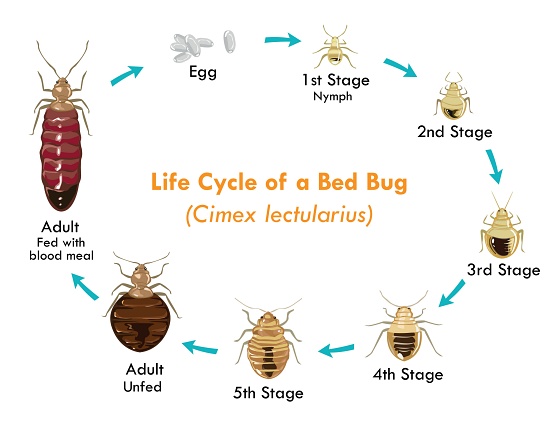
History of Bed Bugs: Understanding the origins and past occurrences of bed bug infestations
Bed bugs have been pests to humans for thousands of years, with documented cases dating back to ancient civilizations. These blood-sucking insects have adapted to living in close proximity to humans, thriving in the dark cracks and crevices of beds and furniture. However, their exact origins remain a topic of debate among experts.
Historical evidence suggests that bed bugs may have originated in the Middle East, where they infested ancient Egyptian homes as early as 1550 BC. From there, they spread throughout Europe, Asia, and eventually reached North America through the early explorations and trade routes. Bed bugs were a prevalent problem during World War II, infesting barracks and ships due to the large movement of troops. However, advancements in bed bug pest control and hygiene practices in the mid-20th century almost eradicated them in many developed countries. Nevertheless, the resurgence of bed bugs in recent decades has posed new challenges for both homeowners and pest control professionals.
Environmental Factors: Exploring the role of environmental changes in the resurgence of bed bugs
One of the key factors contributing to the resurgence of bed bugs is the environmental changes that have taken place over the years. Bed bugs are highly adaptable insects that can thrive in a wide range of environments. As human activities have led to changes in our surroundings, such as deforestation, urbanization, and climate change, the habitat for bed bugs has expanded. These environmental changes have created more opportunities for bed bugs to infest homes, hotels, and other human dwellings.
Additionally, the increased use of central heating and air conditioning systems has created an environment that is conducive to the survival and reproduction of bed bugs. These systems provide a consistent temperature and humidity level, which enables bed bug populations to thrive year-round. Moreover, changes in pest control practices, such as the reduction in the use of certain pesticides due to environmental concerns, have also contributed to the resurgence of bed bugs. These factors combined have created an ideal environment for bed bugs to prosper and spread to new areas.
Travel and Globalization: How increased travel and globalization contribute to the spread of bed bugs

The rise in global travel and increased globalization has played a significant role in the spread of bed bugs. With more people traveling to different parts of the world for various reasons, there is a higher likelihood of these pests hitchhiking and finding their way into new environments. Bed bugs are expert hitchhikers, and they can easily travel from one location to another through luggage, clothing, and even furniture. As travelers move from one place to another, whether it’s for business or leisure, they unwittingly carry these pests with them, creating opportunities for bed bug infestations to occur in hotels, residential areas, and other public spaces.
Moreover, the interconnectedness of the world through globalization has also contributed to the spread of bed bugs. As businesses increasingly operate on a global scale, employees frequently travel for work, attending conferences, meetings, and trade shows. This allows bed bugs to be transported not only within countries but also between different continents. Furthermore, the growing popularity of online platforms for sharing and purchasing second-hand items has also facilitated the spread of these pests. People unknowingly buy infested furniture or clothing, which can introduce bed bugs into their homes and further contribute to the global dispersion of these pests.
Pesticide Resistance: Examining the evolution of pesticide-resistant bed bug populations
Pesticides have long been used as a primary method for controlling bed bug infestations. However, in recent years, a concerning trend has emerged – the evolution of pesticide-resistant bed bug populations. These resilient pests have developed the ability to survive and even thrive despite exposure to commonly used insecticides. This resistance poses a significant challenge for pest control professionals and homeowners alike.
The evolution of pesticide resistance in bed bugs is believed to be a result of their genetic makeup and their ability to adapt to their environment. Bed bugs possess an extraordinary ability to reproduce rapidly, allowing them to go through multiple generations in a short period. This rapid reproduction, combined with the widespread use of insecticides, has created an environment where only the most resistant bed bugs survive and pass on their resistant traits to their offspring. As a result, the effectiveness of many commonly used pesticides has been greatly diminished, leading to increased frustration and difficulty in eradicating these pests.
Lack of Public Awareness: Discussing the impact of limited knowledge and awareness on the rise of bed bugs
Although bed bugs have been around for centuries, their prevalence and resurgence in recent years can be partly attributed to a lack of public awareness. Many individuals are simply not knowledgeable about these pests and their behaviors, leading to a delay in identification and treatment. Without proper awareness and understanding, it becomes increasingly challenging to prevent or control bed bug infestations.
One reason for the lack of public awareness is the misconception that bed bugs are only found in unclean or unsanitary environments. This false belief can lead to stigmatization and shame, causing individuals to keep their infestations a secret and avoid seeking help. Additionally, bed bugs are small and adept at hiding, making their presence easily overlooked by those who are unaware of the signs to look for. As a result, infestations can go undetected and continue to spread, exacerbating the issue.
Changing Pest Control Practices: Analyzing the influence of modern pest control methods on bed bug infestations
The rise of bed bug infestations in recent years has led to the development and implementation of modern pest control methods. These new approaches aim to effectively eradicate bed bugs from homes, hotels, and other infested areas. One such method is the use of heat treatments to raise the temperature in affected spaces to a level that is lethal to bed bugs. This non-chemical approach is considered safe and environmentally friendly, making it an attractive option for many. Additionally, the use of insecticides specifically targeted at bed bugs has become more prevalent. These insecticides are designed to effectively and efficiently eliminate bed bug populations without posing significant health risks to humans.
However, while these modern pest control methods have shown promise in combating bed bug infestations, they are not without limitations. For instance, the increasing prevalence of pesticide-resistant bed bug populations poses a significant challenge. Over time, bed bugs have developed resistance to many commonly used insecticides, rendering them ineffective in eradicating these pests. This has forced pest control professionals to adapt their strategies and seek alternative methods of extermination. Additionally, the high cost associated with some of these modern pest control methods may limit their accessibility, particularly for lower income households or communities. As a result, the influence of changing pest control practices on bed bug infestations is a complex issue that requires ongoing research and innovation to effectively address.
Economic Factors: Understanding the economic implications of bed bug infestations and their resurgence
One of the significant economic implications of bed bug infestations is the financial burden it places on individuals and businesses. When a property becomes infested with bed bugs, the cost of extermination services can be substantial. Professional pest control companies charge varying rates depending on the level of infestation and the size of the affected area. In addition to the upfront cost of treatment, there may also be additional expenses associated with replacing infested furniture and bedding, as well as any damages caused by the infestation. For individuals, this can mean a significant drain on their savings or an increase in debt. For businesses, the presence of bed bugs can result in lost revenue and damage to reputation if not effectively handled.
Moreover, the resurgence of bed bugs also has a broader impact on the economy as a whole. In the hospitality sector, for example, bed bug infestations can have severe consequences. Hotels and vacation rentals that are known to have or have had bed bug problems may experience a decrease in occupancy rates as potential guests are deterred by the risk of encountering these pests. As a result, these establishments may also face a decline in revenue, which can lead to job losses and even closures in some cases. The tourism industry, which heavily relies on the reputation of destinations, can also suffer if bed bug infestations become prevalent and gain negative publicity. This demonstrates that the economic implications of bed bug infestations extend far beyond individual households and affect various sectors of the economy.
Health Risks and Concerns: Highlighting the potential health risks associated with bed bug bites and infestations
Bed bugs may be tiny insects, but the potential risks associated with their bites and infestations should not be underestimated. While bed bug bites themselves are usually not considered serious, they can cause various discomforts, such as itchiness, redness, and swelling. Moreover, some individuals may develop a more severe allergic reaction to bed bug bites, leading to the formation of blisters or hives. In rare cases, a bed bug infestation can even trigger anaphylaxis, a severe and potentially life-threatening allergic reaction.
Aside from the physical discomfort, bed bugs can also have a significant impact on mental health. The presence of these pests in homes or other places where people regularly spend time can cause anxiety, stress, and sleep disturbances. The fear of being bitten during the night can lead to insomnia and paranoia, affecting an individual’s overall well-being. Additionally, the knowledge that an infestation has occurred can create social stigma and embarrassment, potentially isolating individuals or families who are dealing with the situation.
The Rise of Bed Bugs: Why Are They Making a Comeback? was first seen on https://propestcontrolservices.com/





More Stories
The Role of Chimney Inspections in Homebuying
The Rise of Bed Bugs: Why Are They Making a Comeback?
Chimney Masonry Repair 101: Restoring Beauty and Functionality